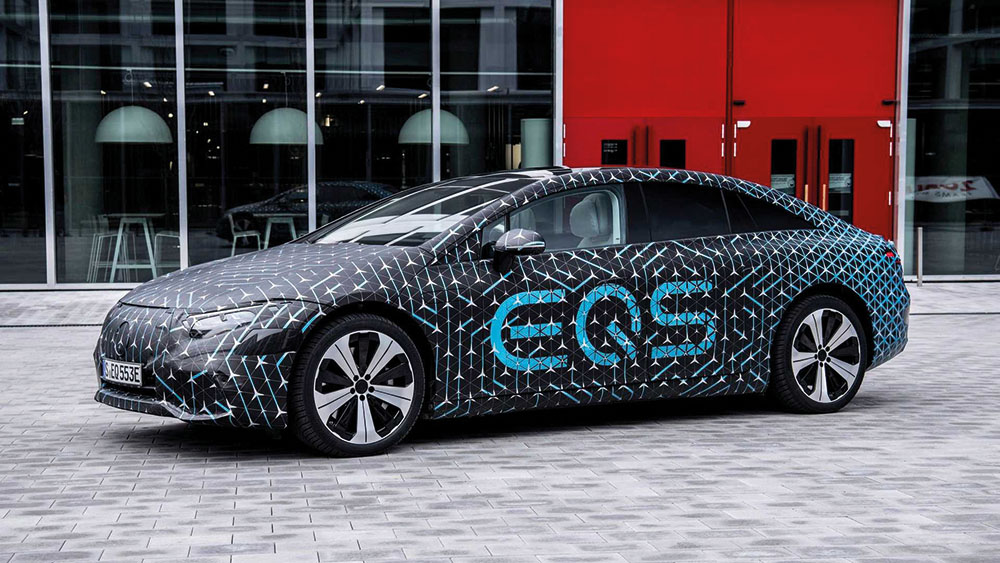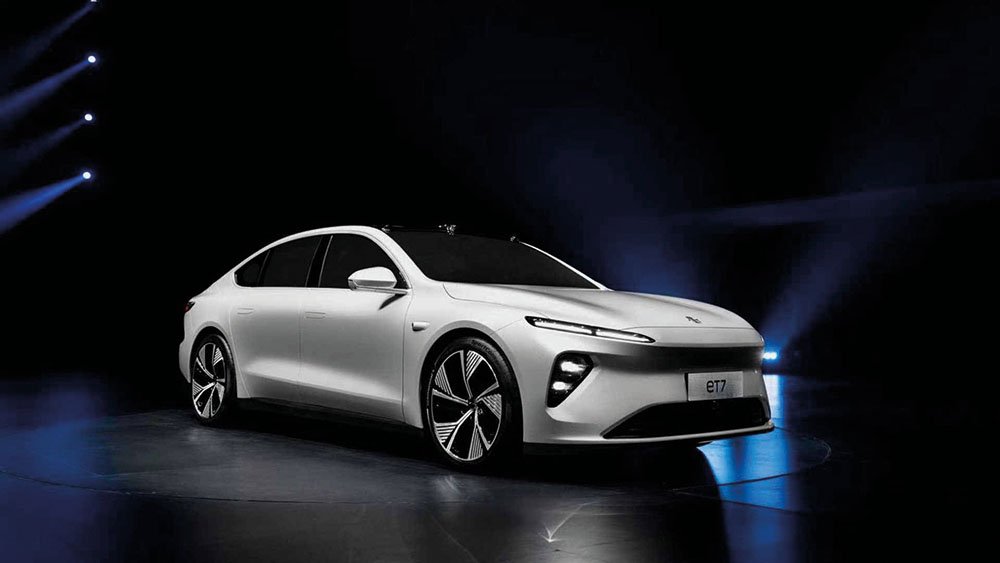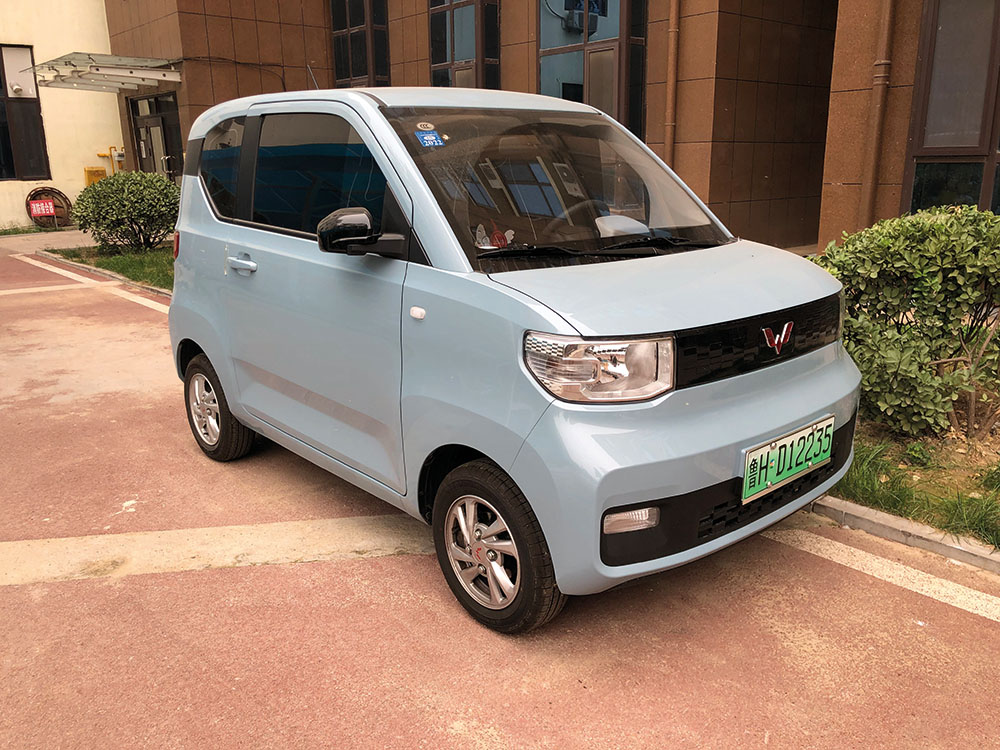 By RICHARD THOMAS
By RICHARD THOMAS
GOVERNMENT action and consumer demand: these factors will determine when the world’s auto manufacturers stop making cars powered by fossil fuels.
In recent months, GM (all-electric by 2035), Ford and Volvo (2030) and Jaguar (2025) have all nailed their green colours to the mast. Jaguar’s stablemate Land Rover will introduce its first electric model by 2024. Even sports car icon Aston Martin is on course to launch two electric models, an SUV and a sportster, in 2025; it hopes to be all-electric by 2030.
GM’s announcement came a few days after US President Joe Biden announced plans to make the entire government fleet electric. The aptly named Henrik Green, chief technology officer of Volvo, put it bluntly: “There is no long-term future for cars with an internal combustion engine.”
***

The new Mercedes EQS is expected to be profitable from day one, Daimler CEO Ola Kallenius told Frankfurter Allgemeine Sonntagszeitung. According to Kallenius, the Tesla Model S rival, based on the Mercedes S-Class, will have a range of 478 miles. “The logic remains the same: the top segment promises the best profit margin,” he observed.
***
New kid on the block Lucid is shaping up as a Californian rival to Tesla. The company started life as Atevia, making batteries for Formula E. Briton Peter Rawlinson, formerly chief engineer on the Tesla Model S project, joined Atevia in 2013, after which it changed its name to Lucid and embarked on production of its own vehicle.
Like Tesla and Mercedes, Lucid is aiming at the high end of the market. The Lucid Air is slated to have a range of over 500 miles on one charge and a 0-60 time of 2.5 seconds, but this performance will come at a price — around $161,000. Lucid also has an SUV on the drawing board which should be in production by 2023. The firm’s business plan anticipates impressive growth — $14bn revenue by 2025 and 500,000 cars per year by 2030.
***
The world’s biggest market for EVs is China. A report predicts that 58 percent of new car sales will be EVs by 2030. HSBC Quanhai analyst Yuqian Ding said the shift is happening faster than previously thought possible, driven partly by growing interest from younger drivers, and partly by government incentives.
Tesla is the current market leader in China, accounting for one in three EVs sold. In its Q4 2020 report, it said Model 3 production at the Shanghai factory was up to 5,000 per week; the latest figures show 25,000 Model 3s were sold in March alone.
CNBC recently canvassed Chinese consumers who bought locally produced electric cars instead of Tesla models. It found price and range were key factors in the decision. Chinese start-ups Nio, Xpeng and Li Auto saw their US-listed share values soar last year as deliveries surged.

Nio is also aiming at Tesla’s upmarket niche. Its forthcoming ET7 is a direct rival to the Model S. Its 150kWh battery pack is said to be good for a range of over 600 miles (using China’s NEDC testing protocol rather than Europe’s WLTP). As well as the impressive range, the Nio ET7 is compatible with the company’s network of Power Swap stations, which allow Nio owners to switch their discharged battery pack for a fully-charged one in a matter of minutes.

At the lower end of the market is a budget EV selling in China for $4,500, the Hong Guang Mini. Launched last year as part of a joint venture between state-owned SIAC Motor and GM, the Mini is marketed as “the people’s commuting tool”, and it’s already proving a big hit. The basic four-seater model has a top speed of 100km/h and there are plans to export it to Europe. The price is likely to increase due to European regulations.
***
In Autumn’s EV News we reported on Tesla’s annual Battery Day, and how the firm’s share price dropped because analysts were expecting the company to announce a million-mile battery. In June last year, Chinese company Contemporary Amperex Technology (CATL) announced it was ready to produce a battery that would last for 16 years and two million km as soon as a contract is signed. Nothing has emerged yet, despite CATL being a major supplier of batteries to Tesla and Volkswagen.
***
Still with batteries, Hyundai has issued a recall for 82,000 of them. Following some fires in its Kona model, a software fix restricted the charging capacity. Then, in January, an upgraded Kona caught fire in South Korea and the recall was issued. This will cost the company an estimated $900m.
***

In late January, Nissan reported it was extending the useful life of batteries from its popular Leaf model after they have been swapped out from the car. Used batteries are sent to recycling firm 4R Energy, where their components are graded on quality. A-grade parts are reused in new batteries for EVs, B-grade in forklifts and for stationary energy storage, and C-grade for backup storage units. 4R Energy estimates that these renovated batteries will have a life of 10 to 15 years – longer than their primary use in the car that supplied them. “We knew that when it came to an EV, the recycling solution had to be much cleverer than the norm and have distinct benefits for EV owners,” said 4R Energy CEO Eiji Makino.
***
One of the common objections to EVs is the origin of the electricity; “if it’s going to overload the grid and is generated from coal anyway, EVs are ipso-facto bad for the environment”. This argument has been debunked in articles too complex to summarise here, but there is some good news. A recent report from energy thinktank Ember found that in the EU in 2020, more energy was generated from renewable sources than from fossil fuels. That’s a first, and while it isn’t enough to reach 2030 targets, it’s a big step in the right direction.




























